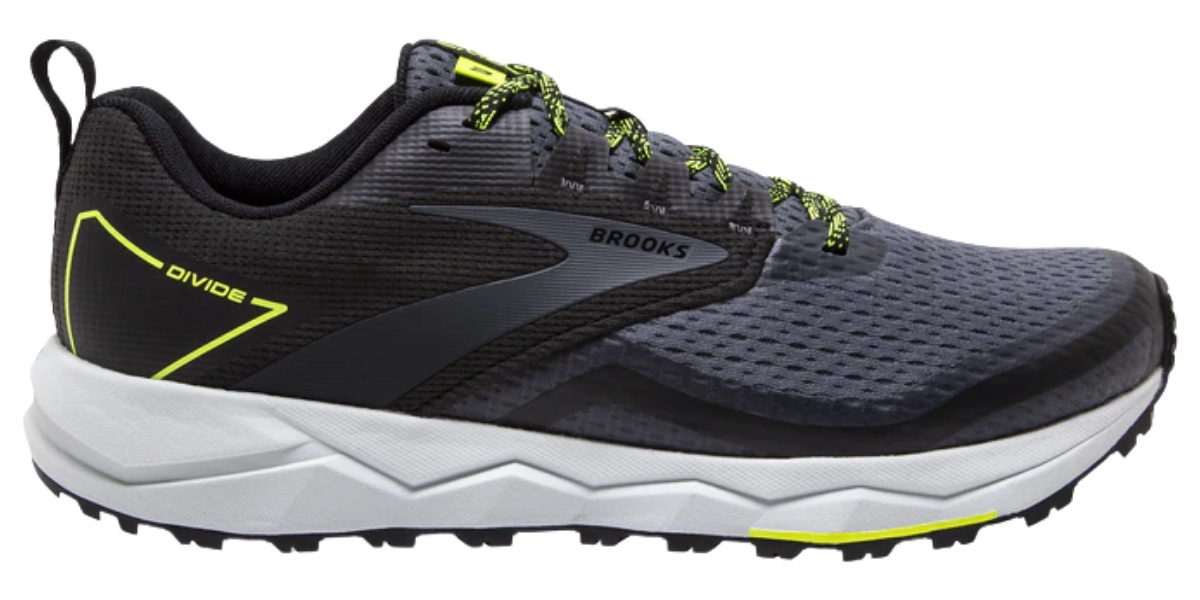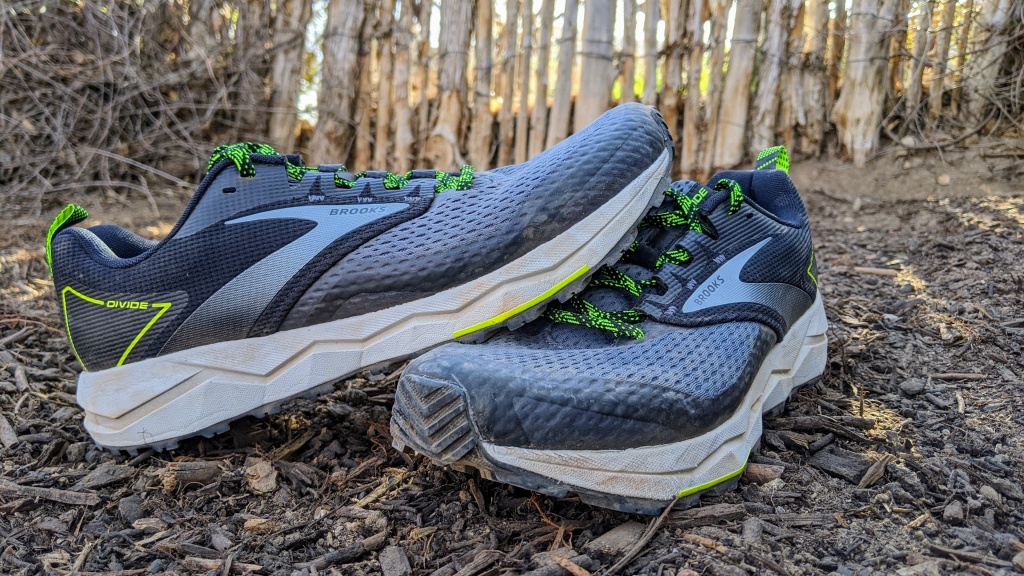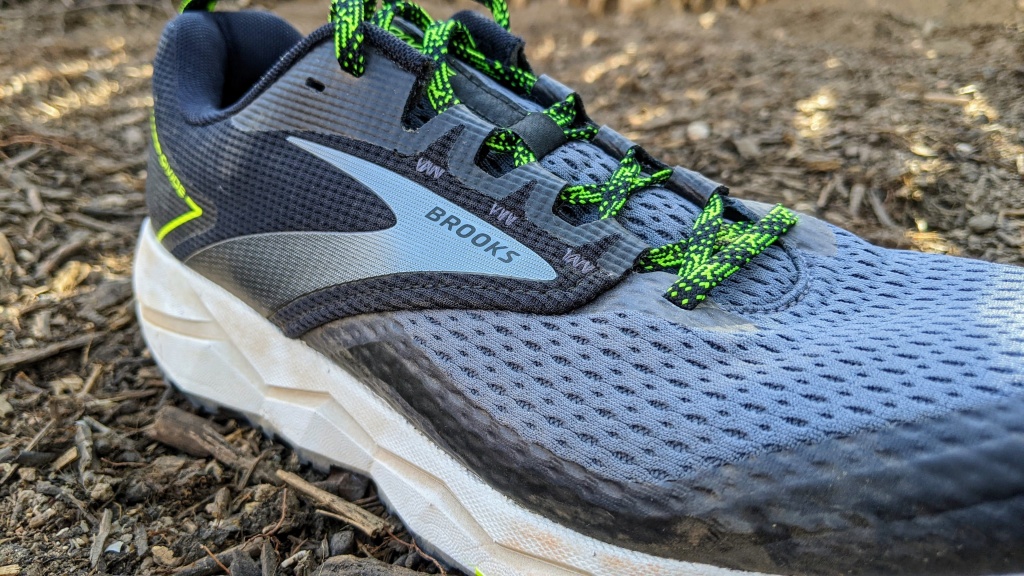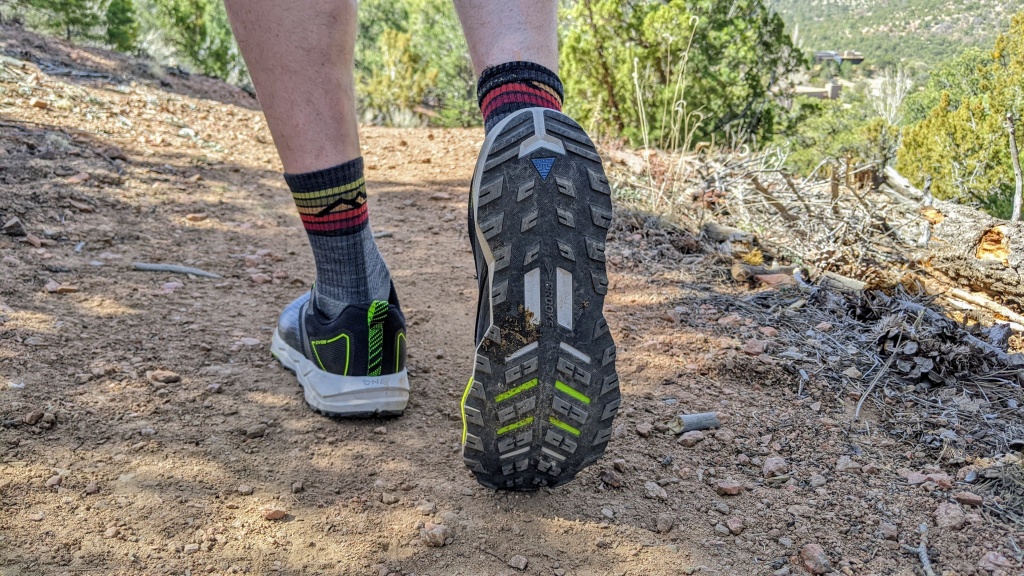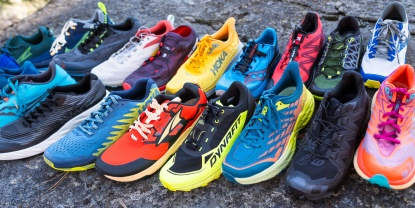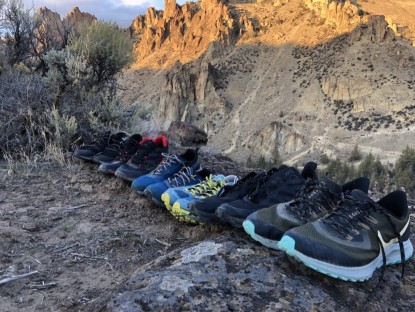Brooks Divide 2 Review
Our Verdict
Our Analysis and Test Results
Unlike the much more serious Brooks Cascadia 16, the Divide 2 is an entry-level trail running shoe that carries over many of the comforts of top-rated running shoes. The proprietary BioMoGo DNA midsole foam isn't the softest within the Brooks' lineup, but it is far from the most energetic. Designers pair a simple rock plate with their tried-and-true TrailTack rubber for improved protection and traction. But at its core, this is a basic shoe designed to help newcomers dip their toes into off-trail travel by making light trail running accessible.
Performance Comparison
Foot Protection
As an entry-level option, the Brooks Divide 2 is designed to provide enough protection for casual trail runners to strike out with confidence. Unlike other options we tested that are outfitted with certain technologies designed for high-mileage or technical terrain, this basic shoe focuses on support and cushioning to protect your foot from the rigors of the trail. The proprietary BioMoGo EVA foam is dense and damp. Although it doesn't offer the same energetic rebound as other shoes, it certainly helps absorb a bit of impact as the miles accumulate on longer runs.
A 25mm stack height in the heel provides plenty of midsole foam to keep your feet protected from rocks and roots underfoot, and a thick 4mm insole adds to the plush feel of these shoes. This ample cushioning makes the Divide 2 very comfortable and consistent on simple terrain, like buffed singletrack. Cutouts in the outsole reveal a rock plate, but only directly underneath the ball of your foot. While this is a nice addition to help tackle short sections of rocky uphill when you're bounding on your forefoot, it is much less protective when you have to navigate over extended rock fields.
Traction
Like other popular Brooks options, the Divide 2 uses their proprietary — and very effective — TrailTack rubber. This compound is stiff and responsive, improving both the traction and durability of the outsole. Although the responsiveness of this rubber doesn't shine through on the Divide 2 due to the damp ride of the midsole, it does help you grip and bound up and through technical terrain when the going gets rough. But like we've mentioned already, technical terrain isn't exactly this shoe's forte, nor its purpose.
It is perhaps most apparent that this shoe draws inspiration from road running models in the composition of its outsole. The 3mm lugs are shallow for a trail shoe, and although they are evenly distributed, they are widely spaced. This design sheds mud effectively but doesn't hold as well in dry and loose conditions. However, the rock plate under your forefoot provides just enough stiffness in the toes to engage the lugs on demanding uphills. While the Divide 2 doesn't provide the most consistent grip, it seems to turn on its all-wheel drive right when you need it.
Sensitivity
Like most trail shoes with mid-20mm stack heights, the Divide 2 is swinging away from agility and towards the all-day comfort end of the spectrum. The midsole foam is damp rather than energetic, and as a result, these shoes are not the most sensitive of the bunch. The choice of midsole material provides a comfortable and consistent ride, particularly across miles of well-graded singletrack. But with all of that energy absorption, you also lose out on a lot of the rebound and responsiveness that helps improve body awareness and agility.
However, with a stack height that drops from 25mm in the heel to 17mm in the toes, there is a significant difference in ground feel across the sole of these shoes. The thickness and dampening effect of the heel is beneficial for those who heel-strike and is helpful for those long runs when your form tends to fall apart as the miles stack up. Although the rocker and rock plate don't allow you to press into the ball of your foot fully, you can engage the tips of your toes surprisingly well. This slight improvement in sensitivity in the toe box allows you to dig in just enough to power through loose uphills or nimbly tip-toe your way through technical rock gardens.
Stability
Where the Divide 2 misses out on sensitivity, it makes up for it with stability. Like a road running shoe, the wide, stable platform is well-balanced on even terrain. As an entry-level trail runner, it is designed to handle miles of forest road or well-graded singletrack. Although the 8mm drop pitches you forward, that is countered by the forefoot rocker. The combination helps you glide almost effortlessly over miles of softly rolling terrain.
Even though the midsole is well-cushioned, the BioMoGo DNA foam isn't exactly soft — it is a hearty, damp foam that is more akin to a memory foam mattress than a feather bed. The midsole's subdued energy and torsional rigidity provide the consistency and structure that make the Divide 2 such a reliable trail running shoe. But this sense of stability comes to an abrupt end as soon as you start running highly technical trails. In particular, the soft upper and lower cut of the heel pocket make this shoe feel very unstable on off-camber trails or when side-hilling. It is best to leave those trails for future adventures while using the Divide 2 and focus instead on building your skills and comfortability running off-road.
Comfort
While we may have been uncomfortable running in these shoes in seriously technical terrain, that was about the only time we were uncomfortable wearing the Divide 2. This shoe is designed to help folks crossover from road running to trail running, and it is all about easing that transition by keeping you as comfortable as possible so that you can push your limits in other ways.
Although not the widest last on the market, the Divide 2 does have an ample toe box to allow your feet to splay out and swell — a regular and very natural occurrence during long trail runs. The thin mesh upper is breathable and particularly accommodating to those with high insteps. There is a light padding on the tongue, but just enough to evenly disperse pressure from the laces. The lacing looks entirely traditional but is one of the most effective systems on any shoe tested. The combination of soft lace and rubberized eyelets allows you to pull the laces almost perfectly taught from the top, a beautifully simple act that even many speed-lacing systems have a tough time accomplishing.
Weight
Like much of the gear for human-powered sports, one trend in trail running shoes is toward ultra-lightweight everything. But often, the desire to save a couple of grams comes at the expense of comfort, and in the worst cases, of performance itself. So even though the Divide 2 falls towards the high side of the scale, it makes sure not to sacrifice performance or comfort for the sake of weight savings.
Based on the thin, simple upper and lack of technologies in the midsole, it is a bit surprising that the Divide 2 tips the scales at over 21 ounces per pair in a men's size 9.5 US. Since there isn't much to the upper, we assume that much of that weight comes from the midsole foam density. Although it is relatively “heavy” compared to some of the other shoes we tested, it never felt unruly on any terrain for which it is designed to run.
Should You Buy the Brooks Divide 2?
If you have been a longtime road runner and are comfortable with the design and fit of road-specific shoes, but are interested in occasionally crossing over to trails, the Divide 2 is a near-ideal running shoe. Similarly, for those looking to get into trail running as a starting point, this shoe offers the versatility and overall value you hope to see in an entry-level model. The goal of this shoe is to set an approachable starting point, and you can decide on the direction of your adventuring from there.
What Other Trail Running Shoes Should You Consider?
Although it doesn't score as highly as other shoes in this review, there is no other option that balances performance and value as well as the Brooks Divide 2. The most comparable shoe is the Salomon Sense Ride 4, a fantastic crossover model that scores as consistently but slightly better in each metric and is slightly more expensive. The Topo Athletic MT-4 is a more minimalist option but handles the transition between road and trail just as well as these other two shoes.


